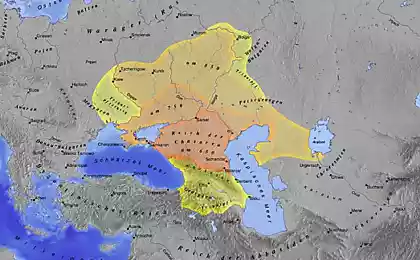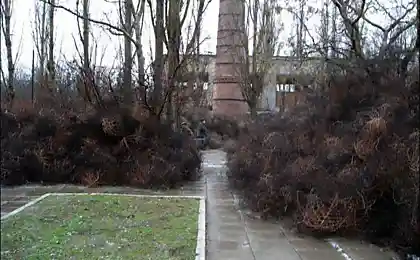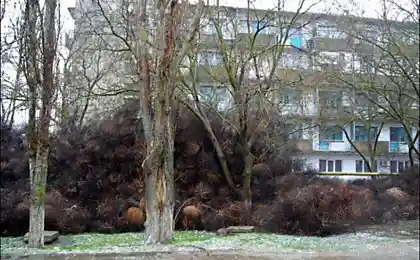1025
The settlement in Crimea filled up tumbleweed
The gale has brought thousands of balls rolling stone in the village of Mirny in the west of the Crimea.
In some areas, the village formed the rubble three stories tall.

- This we have never seen before! - Told the Mirnovsky village council. - Across the village, on the roadside near the high-rise buildings and formed a high fence tumbleweed. Weed has caused so much that yesterday (28 January), were taken.
It is not easy to clean, as the tubers of the wind rolled on each other and are much taller than a man, sometimes higher than three or four meters, and maybe more.
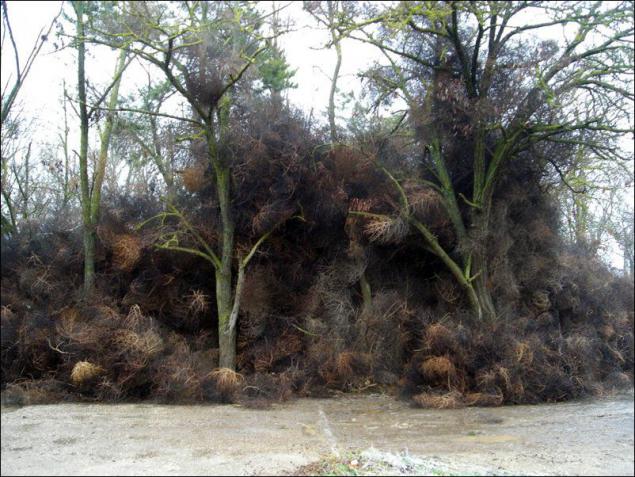

In the photos, villagers laid out on the Internet, it is clear that some high-rise buildings near the tubers tumbleweed reached the third floor.
- On Sunday morning, we wake up, and the window so much grass that even my eyes could not believe, - said a resident of the village of Maria Ignatieff. - I think that even to go out of the door will not work, since the plants were so many that the court has brought. Before the storm only brought sandstorms.
Quickly utilities to cope with the invasion of weeds interfered not only wind, but also sleet and freezing rain. Due to the negative temperature and precipitation of the road covered with a crust of ice. Some residents tried to clear themselves from the local area of grass, waiting for janitors and other intelligence agencies. Others were photographed against the background of this unusual phenomenon.

Tumbleweed - under that name known special education, consisting of dead and dried plants and ride with the wind, sometimes in the form of rather large balls on the fields and steppes. Getting such education is provided by a very wide variety of plants and that those who develop highly branched, but a thin stalk with branches spread wide; in the autumn of dead and dried stalk breaks away from the root, or directly pulled out by the roots out of the ground by the wind, and then transported them to the fields and steppes.
Along the way this captures stem straw, twigs of others, especially the tenacious plant, and finally rolled in a rather large lump. In different places, "tumbleweed" can come from different plants; for example, monocots it can give rise to Asparagus officinalis; many of dicotyledonous plants
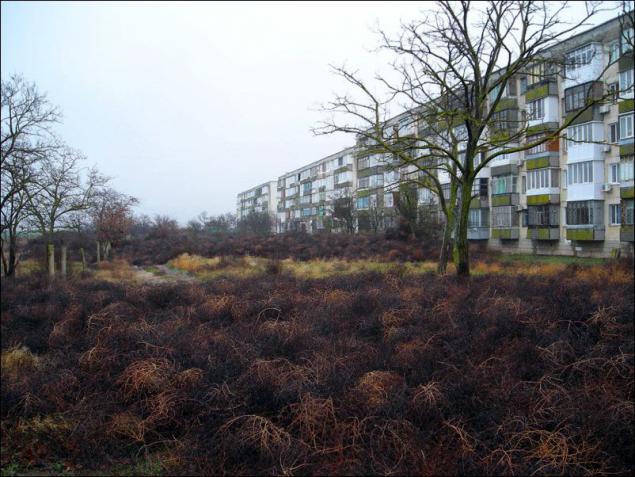

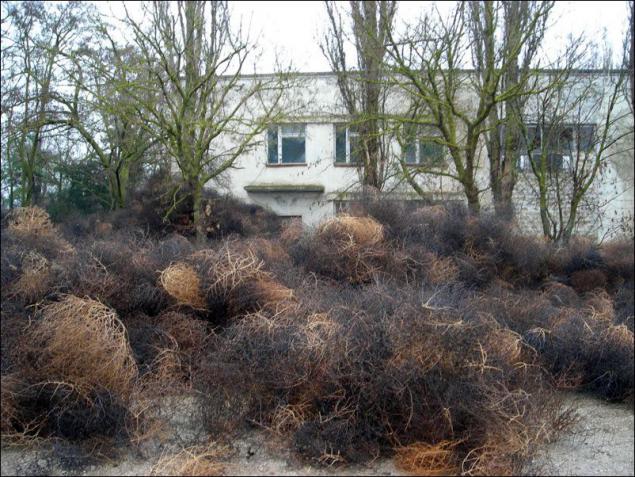
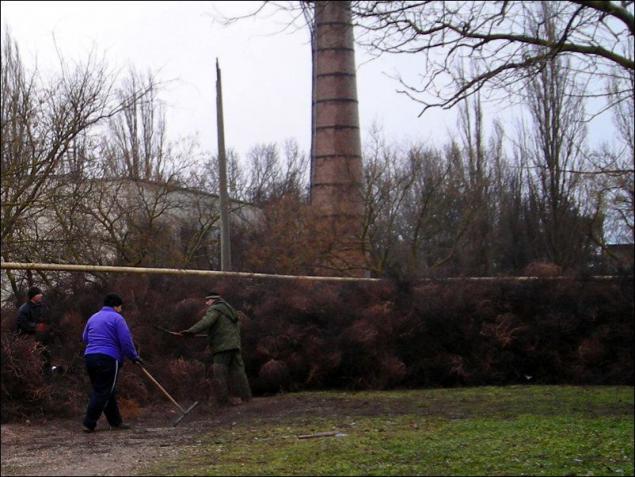
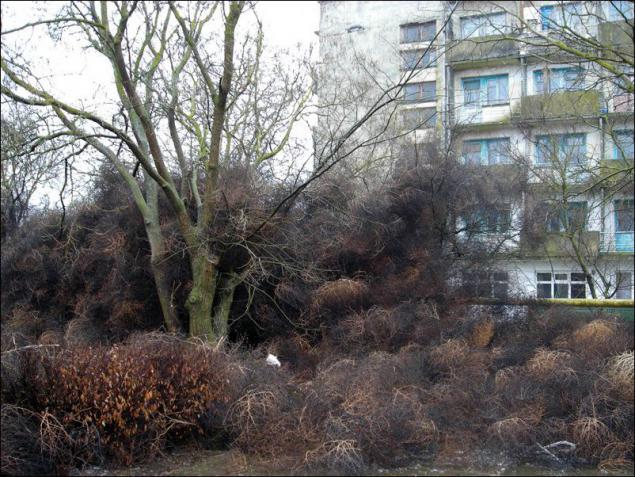
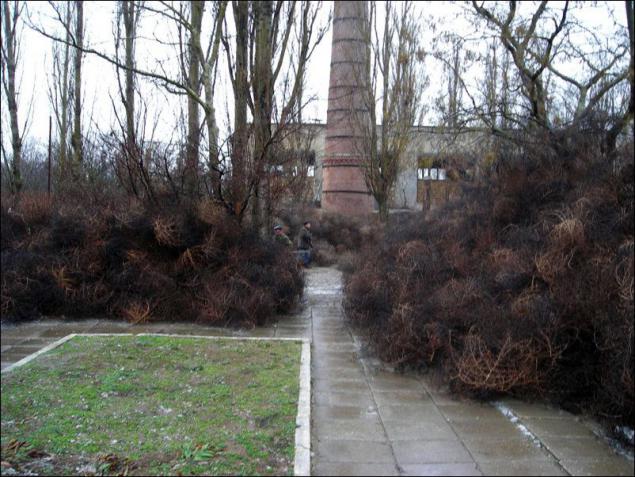


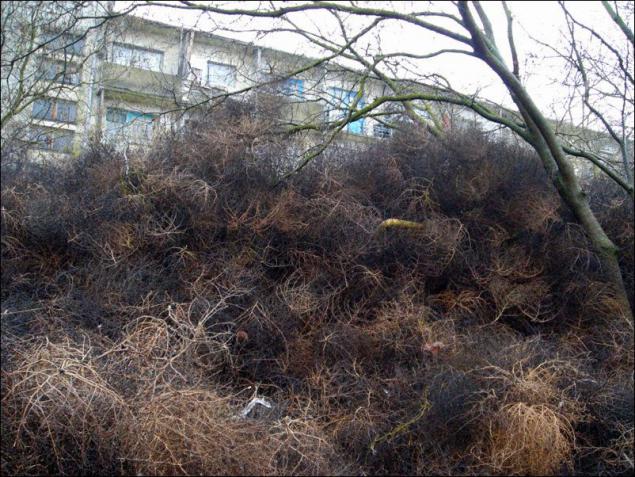

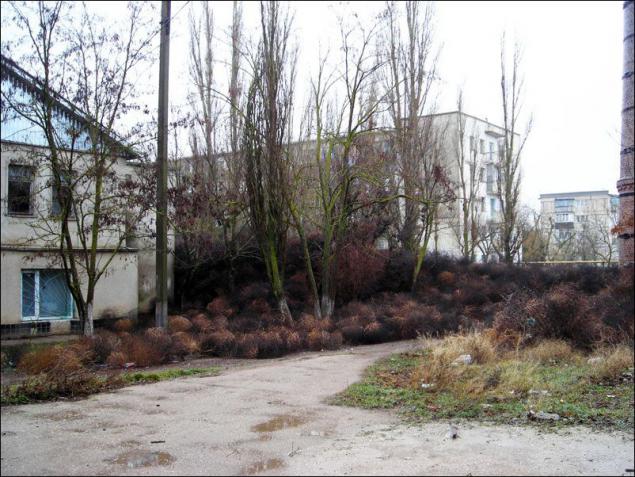
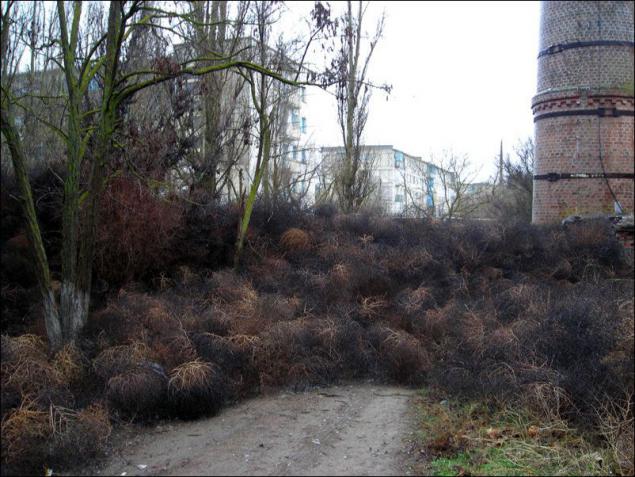
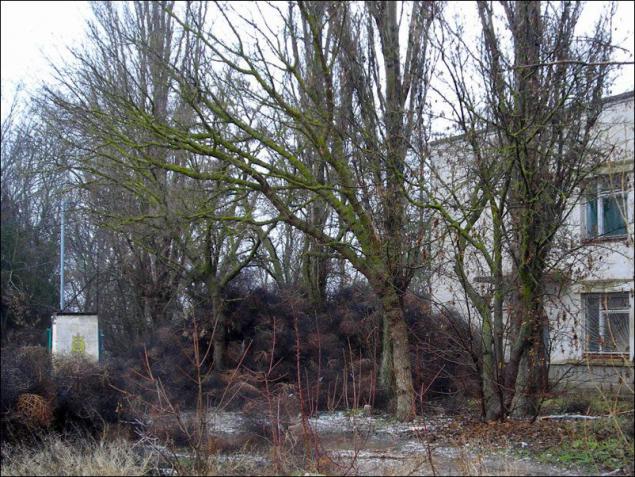
Source:
In some areas, the village formed the rubble three stories tall.

- This we have never seen before! - Told the Mirnovsky village council. - Across the village, on the roadside near the high-rise buildings and formed a high fence tumbleweed. Weed has caused so much that yesterday (28 January), were taken.
It is not easy to clean, as the tubers of the wind rolled on each other and are much taller than a man, sometimes higher than three or four meters, and maybe more.


In the photos, villagers laid out on the Internet, it is clear that some high-rise buildings near the tubers tumbleweed reached the third floor.
- On Sunday morning, we wake up, and the window so much grass that even my eyes could not believe, - said a resident of the village of Maria Ignatieff. - I think that even to go out of the door will not work, since the plants were so many that the court has brought. Before the storm only brought sandstorms.
Quickly utilities to cope with the invasion of weeds interfered not only wind, but also sleet and freezing rain. Due to the negative temperature and precipitation of the road covered with a crust of ice. Some residents tried to clear themselves from the local area of grass, waiting for janitors and other intelligence agencies. Others were photographed against the background of this unusual phenomenon.

Tumbleweed - under that name known special education, consisting of dead and dried plants and ride with the wind, sometimes in the form of rather large balls on the fields and steppes. Getting such education is provided by a very wide variety of plants and that those who develop highly branched, but a thin stalk with branches spread wide; in the autumn of dead and dried stalk breaks away from the root, or directly pulled out by the roots out of the ground by the wind, and then transported them to the fields and steppes.
Along the way this captures stem straw, twigs of others, especially the tenacious plant, and finally rolled in a rather large lump. In different places, "tumbleweed" can come from different plants; for example, monocots it can give rise to Asparagus officinalis; many of dicotyledonous plants













Source:



